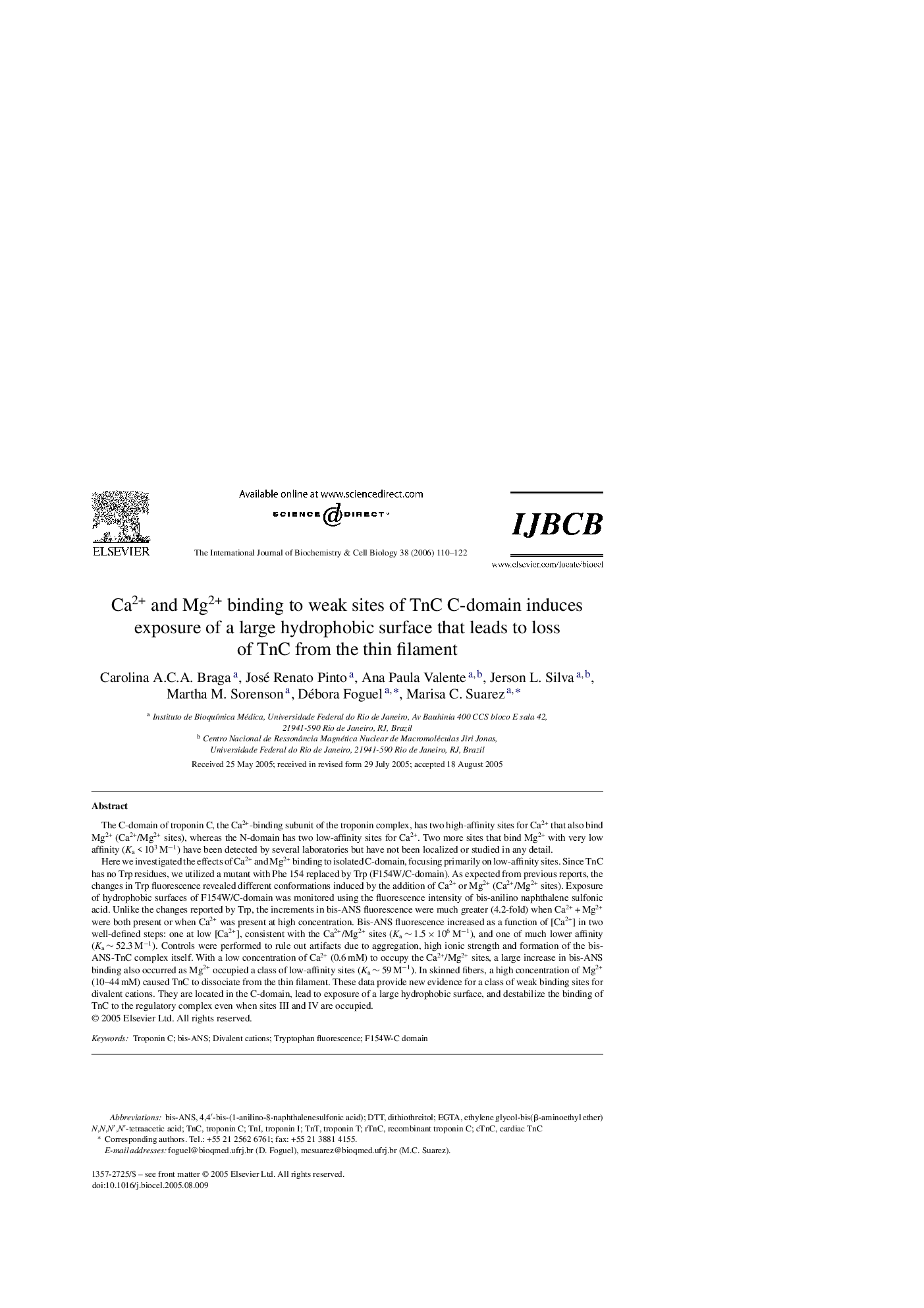| Article ID | Journal | Published Year | Pages | File Type |
|---|---|---|---|---|
| 1984829 | The International Journal of Biochemistry & Cell Biology | 2006 | 13 Pages |
The C-domain of troponin C, the Ca2+-binding subunit of the troponin complex, has two high-affinity sites for Ca2+ that also bind Mg2+ (Ca2+/Mg2+ sites), whereas the N-domain has two low-affinity sites for Ca2+. Two more sites that bind Mg2+ with very low affinity (Ka < 103 M−1) have been detected by several laboratories but have not been localized or studied in any detail.Here we investigated the effects of Ca2+ and Mg2+ binding to isolated C-domain, focusing primarily on low-affinity sites. Since TnC has no Trp residues, we utilized a mutant with Phe 154 replaced by Trp (F154W/C-domain). As expected from previous reports, the changes in Trp fluorescence revealed different conformations induced by the addition of Ca2+ or Mg2+ (Ca2+/Mg2+ sites). Exposure of hydrophobic surfaces of F154W/C-domain was monitored using the fluorescence intensity of bis-anilino naphthalene sulfonic acid. Unlike the changes reported by Trp, the increments in bis-ANS fluorescence were much greater (4.2-fold) when Ca2+ + Mg2+ were both present or when Ca2+ was present at high concentration. Bis-ANS fluorescence increased as a function of [Ca2+] in two well-defined steps: one at low [Ca2+], consistent with the Ca2+/Mg2+ sites (Ka ∼ 1.5 × 106 M−1), and one of much lower affinity (Ka ∼ 52.3 M−1). Controls were performed to rule out artifacts due to aggregation, high ionic strength and formation of the bis-ANS-TnC complex itself. With a low concentration of Ca2+ (0.6 mM) to occupy the Ca2+/Mg2+ sites, a large increase in bis-ANS binding also occurred as Mg2+ occupied a class of low-affinity sites (Ka ∼ 59 M−1). In skinned fibers, a high concentration of Mg2+ (10–44 mM) caused TnC to dissociate from the thin filament. These data provide new evidence for a class of weak binding sites for divalent cations. They are located in the C-domain, lead to exposure of a large hydrophobic surface, and destabilize the binding of TnC to the regulatory complex even when sites III and IV are occupied.
